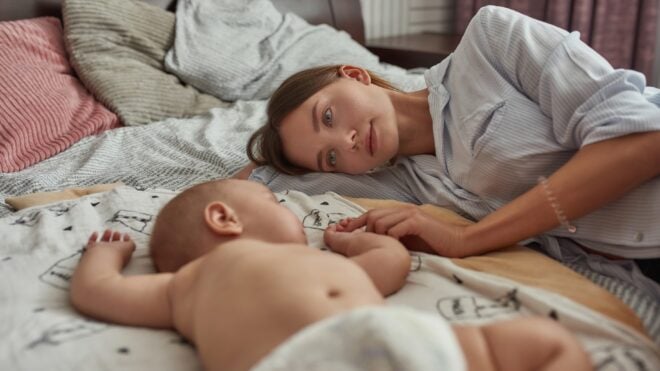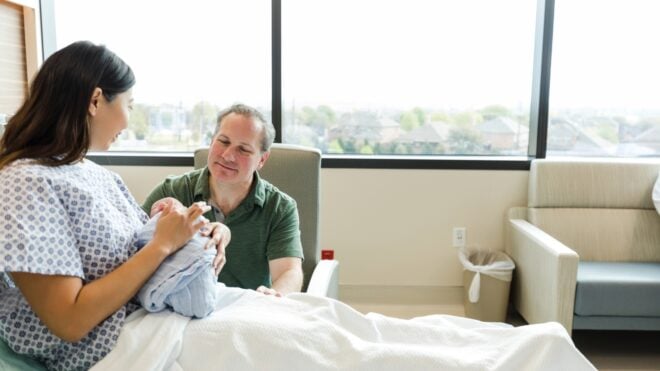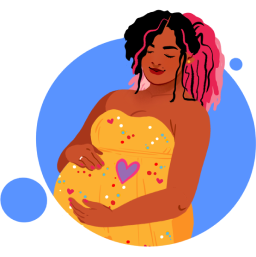
When I made plans to spend a special spring break at Disney World with my 7- and 4-year-old daughters, leaving my husband and our 5-month-old at home, I had no idea I was in for the ride of the lifetime—one that could have cost me my life.
On day two of our trip, we had lunch in a dimly lit café on a faux Mexican street and told our waiter that it was my 4-year-old’s birthday—you know, to get all those extra songs and cakes one gets on a feliz cumpleaños kind of day.
But the trick was on me. That night, I started feeling bad. Like, real bad.
Blaming our festive fajitas and sweets from lunch, once we made it back to our hotel from Epcot Center, I curled up on my side with stomach cramps, tortured by the loud colors in our themed motel. My main concern though? How would I possibly survive Disney the next day, suffering from food poisoning and a bad night’s sleep?
Wednesday morning, things got worse. What had been discomfort was now real pain, localized on my lower right side. Utilizing my best WebMD skills, I self-diagnosed my condition. “Just my luck,” I thought. “Appendicitis in the happiest place on Earth.”
There’s only so long before kids will wait for you to either get better or die when they know they are just a couple feet outside the gilded gates of Disney World, so I sent them on to the park with my mom and called urgent care.
The man on the other end of the line ran through his list of standard diagnostic questions before finally asking me, “Is there any chance you’re pregnant?”
“Oh no!” I explained. “I had my tubes tied five months ago when I had a C-section with my last child.”
Tubal ligation, defined by the Mayo Clinic, is the sterilization of the fallopian tubes. They are either cut or blocked permanently to prevent pregnancy. It even says it on their website: "a type of permanent birth control."
He offered constipation as a diagnosis and advised I come in, just in case.
He was kind, but I feel certain that another mom would have understood the impossibility of deserting my family in the Magic Kingdom so that I could get a dose of Miralax.
And as it was, I started to feel a bit better. A couple of Tums plus the general reassurance of a stranger’s “You’re probably not dying ” over-the-phone diagnostic gave me enough motivation to rally and find my family. I made it to the park for our 2:10 fast pass on Space Mountain, grimacing as that old roller coaster rattled around at 30 mph, taking the 50-foot plunge with shrieks of terror mixed with nausea and pain. After a turn on Big Thunder Mountain Railroad and dinner, we headed back to the hotel where we all crawled into bed just after midnight.
Thursday, our Disney vacation was over.
I felt bloated and uncomfortable but the pain had subsided—I was really tired though and didn’t need my usual in-flight cocktail for nerves. Once we were home, I crawled into bed, figuring I’d be back to normal the next day.
Instead, the next morning, I woke up at 7:30 a.m. in intense pain. Halfway down the stairs, my husband took one look at me and drove me to the ER.
We got there by 8 a.m. and the nurses and doctors immediately began poking and prodding my stomach.
“Could you be pregnant?” they asked. I insisted no, I couldn’t be.
“I just had my tubes tied,” I answered.
Do you still have your appendix?” I nodded yes.
Appeased, they assured me it’s probably just appendicitis and sent me in for a CAT scan for confirmation.
“It’s what I was thinking too!” I told them.
The physician’s assistant returned, “So the CAT scan came back … abnormal and … inconclusive,” she said. “We need to schedule an MRI. But first,” she added, “we just have to do one more test to make absolutely sure you’re not pregnant.”
In too much pain to protest, I peed in a cup and I waited for the MRI.
Finally, she reappeared and dropped the bomb.
“So, the pregnancy test came back positive. We think it’s an ectopic pregnancy.”
I knew that getting my tubes tied wasn’t a 100 percent guaranteed form of birth control—according to the American Pregnancy Association, rates of pregnancy are around 1/1,000 in the first year after the procedure, and 2-10/1,000 after five years—but even the medical teams were shocked.
One wide-eyed doctor told me, “We always warn people that this may happen, but you’re the first person I’ve ever met that it happened to!”
For the next hour, until they rolled me into surgery, I alternated between varied, colorful swearing and heartfelt apologies for my language.
I had been losing blood and the clear need for surgery erased any fear I had regarding the procedure itself. A couple of hours later, I woke up to find the tiny scars of laparoscopic surgery on my abdomen and they sent me home a couple of hours after that, battered and anemic, but more or less “fixed.”
The story of my ectopic pregnancy is more benign than most, tricky rather than tragic, more “What the what?” than woe. Also, had a fourth child been on the cards for our family, we would have been thrilled—shocked, but thrilled. Instead, we got this story: the tale of the time that, despite being surgically sterilized, I almost bled out on Space Mountain due to a pregnancy gone wrong.



